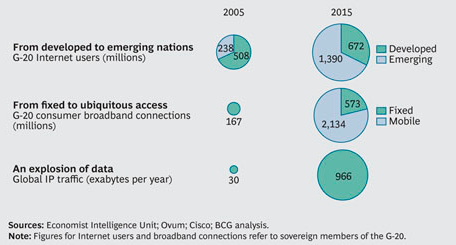
© carlos castilla - Fotolia.com
Companies and brands love to book page impressions with publishers, shopping and trading sites. Users find themselves being bombarded with banner ads all over the web – and not often do these ads add any value on customer journeys and the digital shopping experience. Often they bore us (dresses and dishes), annoy us (gay ads for married people) or make us hate companies brands (you love a and get b beer brands).
Real Time bidding (RTB),
(Behavioral) Retargeting technology and
demand side platforms (DSP) will become game changers in the ad space in the future.
Sounds good but do advertisers get what publishers promise today, just on the basis of ad impression buying? Well, not really…
Yesterday, ComScore announced their “Validated Campaign Essentials (vCE)” which is said to be a Holistic Measurement tool for verifying the effectiveness of advertising campaigns and their subsequent targeting tactics. Thus, ComScore can double-check of where the ads are being delivered, where they are positioned within a page and who’s eyeballs they meet with the optimization add-on to know where they can be better positioned and at what time. The new technology or tool (vCE) will allow ComScore check campaigns effectiveness on a demographics basis.
ComScore definitely recognizes clients need for a world of better performance with campaigns for a reasonable future of advertisements. However the good news, when you worried about the effectiveness of your last campaign, there is much worse stuff to think about…
ComScore has found, in a recent comprehensive study, that over 31% of online display ads get lost for eyeballs of potential viewers, and for some websites it is even a scary number of 91%. Reasons are obvious: Some of these ads are below the fold. User might not scroll down far enough to view them, and vice versa. Some people just scroll too quick and thus get passed them before they have been loading.
The findings also state that as many as 15% of campaign ads were delivered to viewers outside of the targeted media plan places. An average of 4% of ad impressions found viewers in locations that weren’t on the plan, or where products weren’t available. Do you still wonder why the above mentioned banner campaigns reach us? But ComScore works on the issue…
“One big issue with internet advertising is that not all ads that are served end up being seen. This is a core issue raised by the Making Measurement Make Sense (3MS) initiative. In order for marketers to have the same confidence in the digital channel as they do in TV, we need measurement around the visibility of ads.” Mike Donahue, EVP, Strategic Partnerships, ComScore
Spot On!
Google will penalize companies and platforms that have too many ads above the fold in the future: 3 ads per page is sufficient and strategically clever, Google advices in this video. Just imagine your banners are being delivered to platforms that are damaging for your brand. It happens. Impressions appear beside content that were defined as “not brand safe” by the advertiser. Of all tested campaigns, 72% showed up on pages that had objectionable content, as defined by the brand. Now, that ComScore and advertisers like Chrysler, Discover, E*TRADE Financial, Ford, Kellogg’s, Kimberly Clark and Kraft among others push the development of the third-party tracking, there might be hope that consumers and clients get banners delivered that are targeted the right way. Nevertheless, companies need to start thinking about the right call-to-action in order to get the right conversation figures…


 We have already shared some information on a
We have already shared some information on a 







 Never will I forget the day some time between 2001 and 2002 when I went to the BMW pavilion exhibition in Munich to get an understanding of what “Connected Drive” means. Those days, even the people in the pavilion could not help us, and it took BMW three days to give us some proper feedback on this term via telephone. Today, the term is clearly defined as driving with internet access which enables all sorts of connected infotainment, and if you want to know more about it, you can get plenty of information
Never will I forget the day some time between 2001 and 2002 when I went to the BMW pavilion exhibition in Munich to get an understanding of what “Connected Drive” means. Those days, even the people in the pavilion could not help us, and it took BMW three days to give us some proper feedback on this term via telephone. Today, the term is clearly defined as driving with internet access which enables all sorts of connected infotainment, and if you want to know more about it, you can get plenty of information 